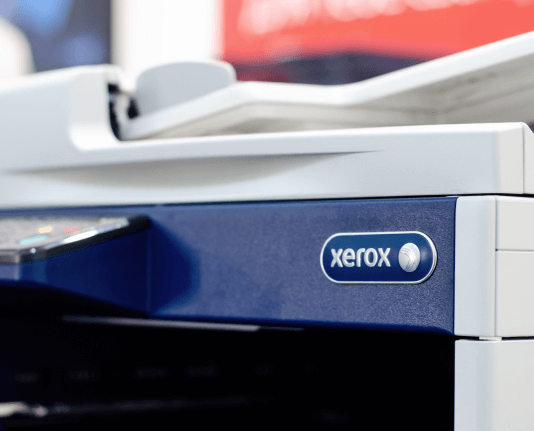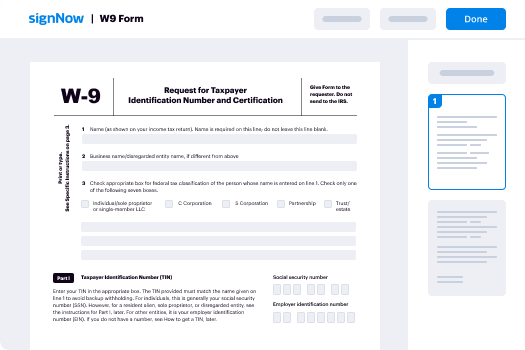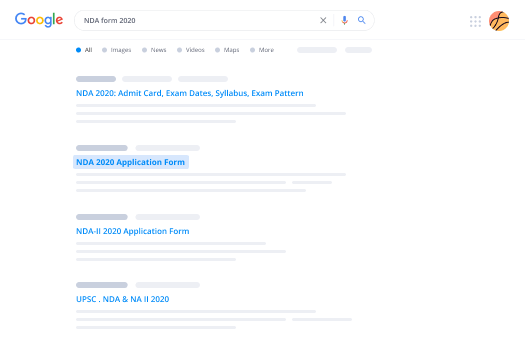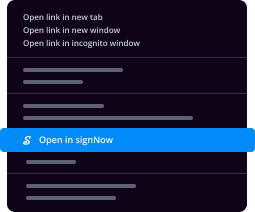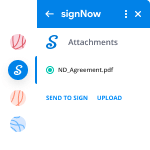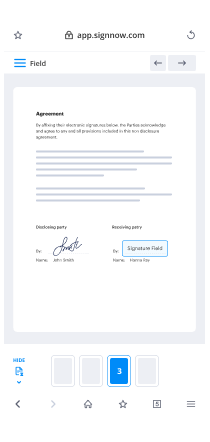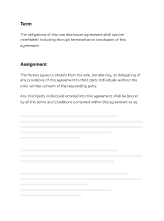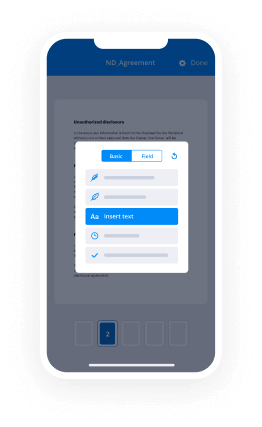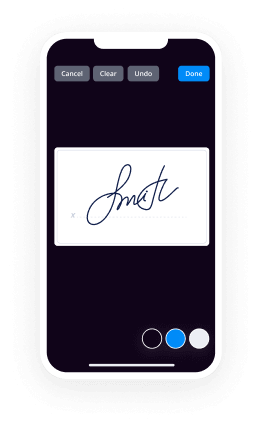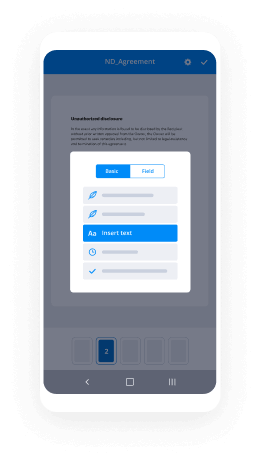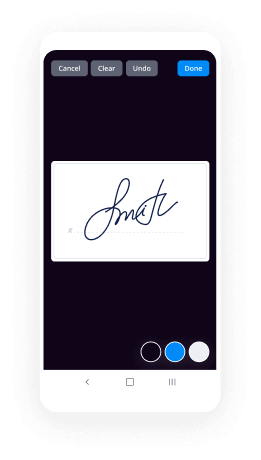Can I Set Up Sign in CRM
Contact Sales
Make the most out of your eSignature workflows with airSlate SignNow
Extensive suite of eSignature tools
Robust integration and API capabilities
Advanced security and compliance
Various collaboration tools
Enjoyable and stress-free signing experience
Extensive support
Keep your eSignature workflows on track
Our user reviews speak for themselves






Advantages of CRM with airSlate SignNow
Integrating a customer relationship management (CRM) solution can greatly improve your business activities, and airSlate SignNow serves as an excellent instance. This robust tool enables enterprises to handle documents and electronic signatures effortlessly while providing a user-friendly interface. With its diverse functionalities, organizations can optimize their workflows, leading to enhanced productivity and greater returns on investment.
How to Begin with CRM on airSlate SignNow
- Launch your web browser and go to the airSlate SignNow site.
- Set up an account to initiate your free trial or log in if you already possess an account.
- Choose the document you want to upload for signature or distribution.
- If you intend to use this document later, transform it into a reusable template.
- Retrieve your uploaded document and modify it by incorporating fillable fields or relevant data.
- Finalize the signing procedure by including signature fields for your recipients.
- Click Continue to proceed with sending the document and setting up the eSignature invitation.
In summary, airSlate SignNow offers businesses an effective and economical method to oversee their signing workflows. Its extensive feature set guarantees that you obtain signNow value for your expenditure, making it a perfect selection for small to medium-sized enterprises.
Prepared to improve your document management with airSlate SignNow? Start your free trial today and discover the advantages of seamless eSigning!
How it works
Rate your experience
-
Best ROI. Our customers achieve an average 7x ROI within the first six months.
-
Scales with your use cases. From SMBs to mid-market, airSlate SignNow delivers results for businesses of all sizes.
-
Intuitive UI and API. Sign and send documents from your apps in minutes.
A smarter way to work: —how to industry sign banking integrate
FAQs
-
What is airSlate SignNow and how does it integrate with CRM systems?
airSlate SignNow is an electronic signature and document management solution that allows businesses to streamline their signing processes. It integrates seamlessly with popular CRM systems, enhancing your workflow by enabling you to send and eSign documents directly from your CRM. This integration simplifies document handling, making it easier to manage client relationships and improve overall efficiency.
-
How can airSlate SignNow benefit my CRM processes?
By incorporating airSlate SignNow into your CRM processes, you can signNowly reduce the time it takes to close deals. The platform allows for quick document preparation and eSigning, which accelerates your sales cycle. Moreover, it helps maintain better organization and tracking of client documents, leading to improved customer satisfaction.
-
What pricing plans does airSlate SignNow offer for CRM users?
airSlate SignNow offers a variety of pricing plans designed to meet the needs of different businesses, including those that utilize CRM systems. The plans are competitively priced, providing cost-effective solutions for teams of all sizes. Whether you're a small business or a large enterprise, there’s a plan that can fit your budget while enhancing your CRM capabilities.
-
Can I use airSlate SignNow with multiple CRM software?
Yes, airSlate SignNow can be integrated with various CRM software, allowing you to choose the best solution for your business needs. This flexibility ensures that you can maintain your preferred CRM while still benefiting from the powerful eSigning capabilities of airSlate SignNow. Integration options include popular platforms like Salesforce, HubSpot, and more.
-
What features does airSlate SignNow offer that enhance CRM functionality?
airSlate SignNow provides features such as customizable templates, automated workflows, and detailed audit trails that enhance CRM functionality. These features make it easier to create, send, and manage documents directly within your CRM. Additionally, the platform supports mobile signing, ensuring that you can close deals on the go.
-
Is airSlate SignNow secure for handling sensitive CRM data?
Absolutely! airSlate SignNow prioritizes security and complies with industry standards to protect your sensitive CRM data. It employs encryption, secure storage, and authentication protocols to ensure that all documents and information remain confidential. You can trust airSlate SignNow to safeguard your business transactions.
-
How does airSlate SignNow improve team collaboration within a CRM?
airSlate SignNow enhances team collaboration within a CRM by allowing multiple users to access and collaborate on documents in real-time. This feature ensures that your team can work together efficiently, making updates and changes as needed. Additionally, the ability to track document statuses keeps everyone informed, fostering better communication.
-
Which is the best marketing App?
Short answer: Ritekit package.Here are just the features of RiteForge that no other products match:Unlimited social profiles, “Enhance” for auto-hashtagging, adding an advertisement to pages (URLs) you share in posts, and much more - along with the world’s only social media post creation/scheduling/publishing product that also gives you an RSS of each of your social profile queues, so you can use in IFTTT, etc.: RiteForge. From $15/month.Now, into the details of why you’ll want RiteForge:For social media crafting, sharing individual pages with a Composer that includes Enhance as well as a slew of handy image, influencer-tagging and other tools, you'll love RiteForge:If you are doing social media marketing (SMM) of any type, or creating social posts for a campaign, you are going to need to multi-schedule the same Tweet, Facebook update, etc. You will need a solution that includes the option to repeat or multi-schedule posts, not just individually schedule them.Riteforge offers repeat posting, but going beyond the other recommended tools, here are just the top five killer features found in no other social media scheduling and publishing tools:Add unlimited social profiles on any tier: Twitter, Facebook, LinkedIn and Pinterest.When you share web pages, have the URL converted to a tiny URL with your ad running on top. When you share web links to social or elsewhere (emails, etc.), you get a way to stay connected to those clicking your links. Sell to them, even!Enhance: this is a one-click solution that generates social posts with all the extras that you’d normally do manually: image, hashtags, emoji, and more. Customize your Enhance to do hashtags as you like them (quantity, position), author attribution, URL shortening (with/without your ad) and much, much more.Template the GIF Templates (RiteForge’s solution for quote images, similar to Canva and Buffer, but since you template your styles, with logos, colors, fonts, etc., reusing them is a breeze).RiteForge is the only social media publishing tool that gives you both an aggregate RSS of all scheduled posts as well as an RSS for each social media queue. With this, you can use any of your queues of social posts in IFTTT, as well as many tools that ingest RSS.ENHANCE: a RiteForge exclusiveMake as many Enhance Presets as needed. You'll have access to them via the RiteForge site, browser extension and mobile app.TIP: Set up your self-branded Images/GIFs (to highlight text and make images with your logo and colors, fonts) and when using the extension, right-click and you can make text images with our unique subtle background animations.Here are the top Enhance features. Use any/all, customize them to do just what you want:Auto-hashtagHashtags increase post signNow & engagement.> Auto-hashtag your posts with hashtags that are both relevant and currently trending.Generate images with your self-branded Image/GIF TemplatesQuote images increase likes and shares.> Automatically create beautiful images from text. Post text is replaced with page title. Ideal for creating customer quotes from Google Sheets or quoting parts of articles.Shorten link with Link AdLink Ads promote your brand on all links you share.> Automatically shorten links with a button, image or video Link Ad. Use Ritely and Place your ad on all links you share with unlimited Link Ads. Full branding, including custom domains, is included as well.Append author's Twitter handleMentioning author of an article increases engagement & signNow of your post.> Automatically @mention author of an article extracted from link meta data.Append text, hashtag or emojiBrand hashtags increase awareness and discussion.> Automatically add any text, hashtag or emoji to the end of your posts. Great for events and Twitter chats.Fine tune your posts with find & replacePosts with flair stand out and get shared.> Automatically replace words with emoji or hashtags. Perfect for adding an emoji to certain words, creating hashtags from brand names and removing unwanted parts of the post.Hope this helps.
-
Is it possible to start a business with little to no money? How?
Oh but of course, you can even start with no money whatsoever. Allow me to draw an image for you™️. First you need to secure your own personal living expenses and keep it separate from your business. In fact you might not be able to make any income from your business for the next 3 to 5 years. 95% of startups fail and no one want to invest in your living expense to float yourself first by a job or a side income like freelancing or something. Second, you need to get a startup budget on your own, no debts or borrowing from friends or family nor investments. Create a source of income in order to create minimium viable product that deliver 80% of the value with only 20% of the features. In order to do that you may need to start another product or a simple business, basically hustle or save whatever extra you make to have enough money to pay for your MVP. Third, now that you started your dream business with an minimal viable product, try to make it a success without asking for loans, or investments from anyone. Just let your product prove itself in the market and use its revenues to support itself. At this stage you need just a market viability proof so you can have statistics and numbers in your brief case. Fourth, baby you are ready to talk to investors, start with friends and family, then angel investors and finaly talk to venture capitalists . Use the money to get the rest of your 80% of features and expand your marketing and distrbution network, grow your team and so on. Never ask money for your own salary. Now you are ready to run with your venture. That’s how ideas float and take off from ground in a nutshell. P.S: If you like my writing style and you would like to learn how to do business as a career path from level zero to level 100, join my education project on patreon and join my community on discord. Links are on my profile. P.P.S: Wear a parachute. P.P.S: Do you like my hand drawing lol?
-
How do you start a company? What is the minimal set of administrative hoops that one needs to (and/or should) go through to turn
Every step ??? Okay - Here is every small step in the chronological order Hope it helps - The Sure Steps - 1. Figure out what change you want to make in the world. Nothing else matters and you should not even be beginning a company until you know the change you are passionate about making, personally and professionally. 2. Begin researching the industry and your competitors. 3. Determine how to create your product. 4. Talk to potential customers and users for feedback. 5. Come up with a name for your company and product. 6. Build your pitch deck. This is particularly important if you need to raise funding. 7. Create pro forma financial projections. These should show the next 3-5 years, and include a pro forma income statement and a pro forma cash flow statement and balance sheet. 8. Determine how much capital is necessary to get to cash flow positive by calculating your cash flow breakeven point. 9. Get feedback on the pitch deck from your mentors, advisors, friends, and family. 10. Find a cofounder, if needed, whose skills complement your own and can help you achieve more. 11. Select a quality corporate law firm in your area when you are ready to incorporate and get some legal advice. 12. Incorporate and obtain an Employer Identification Number from the IRS 13. Open your company bank account. 14. Talk to your attorney about whether you should make an 83b election. These are often important in signNowly reducing your taxes in a very legal way by paying your taxes upfront when you start a company. 15. Build a basic product prototype or Minimum Viable Product(MVP), a term coined by Eric Ries which has become very common in startup circles over the past couple of years. 16. Create employee agreements for everyone 17. Create confidentiality agreements for everyone, both employees and contractors, from the beginning. 18. Hold your initial Board of Directors meeting, which could just be with yourself or maybe two board members that you appoint. 19. Create your Restricted Stock Unit (RSU) plan and/or your stock options plan that enable you to provide equity ownership and incentives to your employees to gain ownership in the company over time. Often you want to vest those options over a period of four to five years. 20. Issue your stock certificates to yourself and to your initial founding team. 21. Fund your bank account with the initial capital contribution either coming from yourself, friends or family, or peer-to-peer lending organizations like Fundable or Kickstarter. 22. Determine whether you need outside capital to start. 23. Raise any initial capital you need. 24. Get a company debit card and credit card and apply for a corporate credit line if you need to. 25. Set up your accounting software and begin putting in your chart of accounts. 26. Select your payroll provider so you can actually pay your employees. 27. Consider trademarking the names of your company and product. This is something to discuss with your lawyer. 28. Design your logo. 29. Create some business cards. 30. Find office space to work out of (if you need to.) 31. Furnish your office. 32. Purchase any software or hardware you need. 33. Get Internet access set up, which is obviously critical in a tech company. 34. Obtain a Universal Product Code (UPC) if your product is going to be sold in stores. 35. Design any labeling and packaging if needed. 36. Finish your initial alpha/prototype product and bring it to market regardless of whether it’s a tangible product or an intangible software good. 37. Get initial user and customer feedback. 38. Order your initial inventory, if needed. 39. Register your domain name 40. Design your company website. 41. Install a tracking tool like Google Analytics on your website 42. Add a shopping cart if you choose to pursue e-commerce. 43. Get a merchant account if you want to accept credit cards. 44. Sign up for an email list tool like iContact or MailChimp. 45. Optimize your website for the search engines by adding content or adding a blog and getting other websites to link to you. 46. Install a Customer Relations Management (CRM) system—a tool that can track your customer base and the interactions you have with your customers and users. 47. Hire your initial staff to be able to begin your operations. 48. Create your company values and mission statement 49. Announce your product launch to the local media. 50. Hold your launch event and start selling. Those are the first 50 steps to being ready to sell your product. The next 50 steps are all about once you start selling, how you can build your business to your first million dollars in sales. 51. Hire a team to fulfill your orders and provide customer service. 52. Start an affiliate program or distributor program, which enables you to get other people to sell your product for you for a percentage of the sale. 53. Recruit affiliates and distributors. 54. Set up an ad tracking system so you can track your advertising and the results, conversion rates, and cost per lead. 55. Try different online advertising techniques like cost-per-click advertising with a small test budget. 56. Get some results for that advertising. 57. Optimize and scale it as needed. 58. Determine the cost of acquisition per lead for each channel. 59. Determine the conversion rate for each channel. Then you can combine those to determine the customer acquisition cost by channel. 60. Calculate the lifetime value (LTV) of a customer. Once you know that, you’ll know how much you can spend to acquire a new customer, which is critical to being able to scale your business’s marketing scientifically. If you can combine great storytelling with scientific marketing and trackable channels, you can rapidly grow your sales. 61. Test your marketing and advertising with a bigger budget now that you know your LTV. 62. Test social advertising and display ads, and calculate the return on investment. 63. Scale your advertising up until the marginal cost of customer acquisition is equal to the marginal return from that customer acquired. 64. Optimize your advertising to bring down your customer acquisition cost. 65. Collect testimonials and use cases from those customers and perhaps even build a few PDF case studies. 66. Create social word of mouth for your product, using a tool like HootSuite to manage what’s being said in the media about you, your product, and your brand. 67. Create a YouTube video promoting your product. 68. Attend an industry trade show or conference. 69. Consider selling your product in bulk at wholesale to get more sales and initial brand awareness. 70. Bring on a bookkeeper to automate your accounting system so you can stop doing it yourself now that you may have started to have some real revenues. 71. Create an employee directory, once you get beyond a handful of employees. 72. Begin reviewing your profit and loss (or your income statement) and your balance sheet monthly. 73. Compare your initial forecast with actual results. Take the budget that you created before you began and compare that initial pro forma forecast with your actual profit and loss results. Compare the deltas and talk about them as you create your next iteration of your budget. Eventually you’ll begin creating budgets annually and locking in those budgets and calling those the plan, and then comparing actual results on a monthly basis against your annual board-approved plan. 74. Hire your first salesperson. 75. Create a sales compensation plan that enables you to pay someone either on a percentage of sales basis or based on the units they deliver by converting customers or up-selling customers. 76. Set up a company healthcare program and other benefits for your employees. 77. Establish your vacation policy. 78. Test offline advertising carefully. You’ll want to put some toes in the water around offline advertising like direct mail or maybe local radio, and begin to test and get results and determine if it works for you. It takes a lot of testing to make your offline advertising scale. 79. Create an online wiki or intranet for your company where you can keep track of your processes. 80. Create a digital company handbook that can be edited and improved by your employees, like a Wikipedia article. 81. Open up a credit line with your bank. The best time to go after funding is when you don’t need it. If things are going well, go ahead and open that credit line. 82. Create an offsite work policy. Some of your employees may want to work remotely. Generally, as long as they’re getting their work done and are able to show up to the meetings you do have, which should be pretty minimal initially, you should be able to enable them to work offsite a couple days a week. 83. Once you can show that $1 in means $4 in revenue, raise capital.Until then, bootstrap as much as you can. Only raise your initial round of capital once you have a mathematical model for scalability, then go out and raise a true series A round of funding if you choose. 84. Create a list of firms from which to raise initial growth funding. 85. Update your pitch deck with the new data, new mentors, and new team members. 86. Build relationships with industry bloggers and different people in the media. 87. Seek product reviews. 88. Hire an Executive Assistant (EA) or an office manager to manage your schedule and the business’s day-to-day tasks. 89. Hold your first company retreat. 90. Take customer feedback and improve your product. You will want to create a product management process to incorporate customer feedback on an ongoing basis. Use this process to take your initial alpha, turn it into a beta, and then turn it into a general release, incrementally improving as you go. 91. Get connected to investors through people you know. 92. Have initial get-to-know-you meetings for investor feedbackabout six to nine months before you’re ready to raise capital. 93. Under-promise and over-deliver on your financial and milestone results for the next 90 days. 94. Determine how much capital to raise. A good rule of thumb is to raise at least twice as much as you’re going to need for the next one year of operations. 95. Return to the firms you like for partner presentations. 96. Do 20 partner presentations in 1-2 weeks. You need to have a disciplined, tight process for this. 97. Get at least two term sheets. 98. Negotiate and sign a term sheet. 99. Complete all the diligence requests that come to you 100. Close on your investment capital. Make sure the wire hits your bank account. Now it’s time to grow and scale a real company. The hard work now begins
-
What is the best email hosting besides Google?
Disclaimer: we do not work at Zoho. We are Freelensia, an online platform that connects freelance interpreters and companies looking for short-term interpretation for meetings, seminars and exhibitions. Our moto is interpreters anywhere, anytime, for any language. If you are interested, please visit us at https://www.freelensia.com.We are a previous user of Google’s corporate mail and currently are using Zoho Mail. Please see the screenshot below:The interface is very much like Gmail. We had some trouble visually in the beginning because it is so overwhelming (the view seems more cluttered than Gmail). But we later appreciate very much because it is a lot more powerful. For example, you can tag people in your organization in a specific mail instead of forwarding the e-mail.A big plus is that you will be able to integrate with a entire suite of Zoho products: forms, campaigns, CRM etc. Some of these products do not exist for Google or is a lot better.A drawback of Zoho Mail is that you do not have all the cool labs of Google. Setting up signatures is a bit difficult. Canned responses do not exist. There may be some font issues if you are writing e-mails in non-alphabetic languages.The coolest thing is that their basic plan is free forever up to 15 e-mail addresses. I don't think there are many e-mail services out there that offer this level of flexibility for early startups.If you are interested, please use the link below to sign up. We will both receive 5 more free e-mail address slots from this invite. It is completely and forever free as long as you are below the limit for number of users. No trial, no credit card input, etc.EDIT: The limit is now 25 users + 5 free users from our referral linkLet me know if you have issues setting up!https://zm4.bz/7M01kkXa
-
What is the best tool for cold email marketing?
From my experience to automate the process of personalizing emails and sending follow-up messages you can use the following tools: Woodpecker, Mailshake and SalesHandy.WoodpeckerIn picksaas I use Woodpecker. With this app, I can upload the list of contacts in .csv including the snippets like first name, last name, company, job position or and others. The custom elements added to a message are automatically filled in with the particular recipient’s data. Well, this is a huge advantage because I don’t have personalized each mail manually.It’s pretty easy to set specific rules for sending follow-ups In a nutshell, Woodpecker saves me a huge amount of time, at the same time keeping conversations personal.MailshakeMailshake is another cold mailing tool, unfortunately, it’s only available with Gmail account. Like Woodpecker it enables to automate email campaigns. It lets to take advantage of pre-defined email templates available in the software to create your email campaigns.SalesHandyLast but not least, SalesHandy. This app is a little bit more advanced. I think it’s the best for big enterprises and more demanding marketers who want to send or monitor attachments. It also lets you integrate with the most popular CRM software, so you can record any activity, which should be especially useful for larger enterprises.Hope I helped. :)
-
How do I set up a CRM system?
Ideally, when looking to implement a new CRM in your business, I would first aim to remove all ambiguity in the needs and expectations before implementing, or even before choosing a CRM provider.Practically every CRM software will provide a free trial period for new users, so use this opportunity to test what fits best for you & your business needs.So first and foremost, it’s vital to establish a clear business case, defining specific and measurable goals. These may include areas like streamlining sales and marketing or automating tasks and workflows to increase productivity.A good place to start is with an internal review to see what are your pain points & what problem(s) are you wanting to solve by implementing a CRM?What do you need from your CRM & what are your expectations?If you’re unsure, these 3 questions may help in ensuring you get the right CRM for your business;What are your pain points?What problems would you like your CRM to solve?What value do you want it to add? (monetary, time-saving, client engagement, all?)As mentioned, practically every CRM software will provide a free trial period for new users, so use this opportunity to test what fits best for you & your business needs.This is also an ideal way to boost user adoption & team buy-in. Get as many people in your team to join you on the trail as you can. Ensure that those who will be using the CRM on a daily basis are involved in the decision process.One of the major problems in implementing CRM is that many organizations assume it to be an IT project. But you’re better off asking those who’ll be using it the most to provide you with their feedback.What are the pain points for the sales team?What features do the Marketing or Customer Success team need?Do they like the UX?Is it intuitive?A CRM that can meet the majority of your business requirements, and is not a chore for your team to use, will likely mean a greater user adoption and ultimately, a better ROI.As far which CRM is best, I’d say that’s entirely dependent on you, the user’s needs, as well as the type of business you’re running or industry you’re in.Is your business B2B or B2C? Do you target specific industries or verticals?Some CRM’s are ideally suited for specific industries, so this may help in narrowing your choices, rather than spending time trying to mould the system - there may be an ideal fit already available.In terms of features & functionality for CRM’s, it’s good practice to think of or prepare a list of;Must HavesNice to Have’sa Wish ListOnce you have those defined, you can narrow the field based on UX, intuitiveness, cost etc. This will also allow you to test or check for any available integrations with your existing software(s).Answers to the above will enable you to select the best platform for you.Whichever platform you choose, it should be flexible enough to mould around your business processes & needs - not the other way around.Also worth checking, can the CRM platform you choose scale with you as your business grows or will it suddenly become much more expensive as you add users or features? Free options may be great to get started with, but may suddenly become that much more expensive as you & your business grows.If you’re looking for a cloud-based, sales automation platform that’s easy to use, I’d recommend Livespace.Livespace is a next-gen, process-focused CRM with task & sales automation, drip email capability and over 70 available integrations - ideally suited for SME’s looking to grow.Some key Features include:Contact Management, inc. tagging / grouping (both person & company)Instant Grab from LinkedIn / Gmail contacts via Chrome ExtensionSales Pipeline Management (kanban board)Multiple Sales ProcessesDrip Email AutomationEmail TrackingSales & Revenue ForecastingHistorical Data from Past Purchases (company & person profile)Team Balanced Scorecard & KPI’sMobile / Tablet App (iOS & Android)Open API / Numerous Integrations / PieSync 2-way mirroringI hope this helped!If it did, please leave an upvote so it signNowes more readers. If it didn't, feel free to leave me a comment & tell me how I could have provided more help or value.**Disclaimer** I work with Livespace CRM & would be happy to connect with you to further discuss how or where we may be of assistance.
-
Why do I have an account on Quora if I never signed up?
I’ve noticed that a lot of people have asked this question in various ways and, through research and experience, I’ve found out why.Quora API can find your profile details from your existing accounts like Google, Facebook and/or other places and automatically make you an account on Quora without you ever consenting to it or realizing it.When you finally ‘join’ Quora officially, you log in to an account that was probably made ages before you even actually joined.It is likely that you searched up something on a search engine that associated to Quora somehow and you logged in with one of your social media accounts, generally speaking, Facebook.Many of Quora’s website traffic is from people searching things on the internet and to find answers, looked in Quora.To disconnect social media accounts that have connected, you can go to Your profile picture > Settings from the drop down menu > Account from the side menu > and scroll down to see Connected Accounts. Disconnect all or some as desired and done! Those accounts now have no connection to Quora whatsoever.You can also completely delete your Quora account : Your profile picture > Settings > Privacy > Delete Account.
-
I have a CRM website. How can I get more users signed up?
Hi, You need to create mobile version on all platform and upload it on App stores. Before some days i visited this website for mobile application development. You can go through Custom iPhone App Developers, iPhone Development, Android Application Developers, iPad Developers New York,Los Angeles,Chicago
-
I need a common CRM developed that allows each customer to sign in and manage their own information. What is the term for this s
Based on what you have described, I think you need a CUSTOMIZED CRM. You have to tell your developer that you need a customized CRM that will be used by both you and your customers.You will need to give your to be hired developer a doc describing what you want for each module or feature. Then he will be able to develop it.Please note that CRM is a complex yet very useful system and each CRM follows some process flow. As you will develop it custom, the CRM should be developed according to your existing business process flow.If you or your developer miss any process flow to note down or develop, the whole system might get unuseless.Feel free to ping me if you need any further information.
Trusted esignature solution— what our customers are saying
Get legally-binding signatures now!
Related searches to Can I Set Up Sign in CRM
Frequently asked questions
How do i add an electronic signature to a word document?
How do you know an electronic signature is real?
How to do electronic signature in quickbooks?
Find out other Can I Set Up Sign in CRM
- Official transcript request indd form
- University of minnesota human resource information form legal
- Student information release authorization note to authorize another person e
- Link to contract form
- Essay form toctwd d umn
- Application for attending another university of minnesota campus as form
- Sample criminal background check application letter university of form
- Faculty amp staff payroll deduction pledge form
- Veterans information form university of minnesota morris
- Other assistance you must immediately report to the financial form
- Mandatory orientation leader information sessions the university
- Section 1 student information to be completed by all applicants
- To complete an interest form university of mississippi
- Long term study abroad scholarship application university of form
- Parentspouse ferpa consent form university of missouri umkc
- Form university of missouri st louis
- Printable special gift pledge form personal information special
- Chancellorampamp39s award for staff excellence nomination form
- 1 in 4 women have been sexually abused in some form by age 18
- The university of montana school of music application for music umt form

